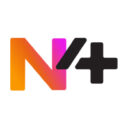Data silos have been known to cause headaches for healthcare organisations the world around, with a lack of unified access to information risking oversights that could have a detrimental effect on patient outcomes.
With an apparent need to set standards for passing healthcare data between multiple systems to ensure more streamlined access, Health Level Seven (HL7) – the global authority on standards for interoperability of health technology – developed Fast Healthcare Interoperability Resources (FHIR).
Here, we explain what FHIR is and the benefits it can bring to the healthcare industry.
WHAT IS FHIR?
Fast Healthcare Interoperability Resources is the global industry standard for passing healthcare data between systems. Access is free and open, and HL7 have designed it to be quick and easy to understand and implement.
FHIR is part of a wider international group of standards developed by HL7. Information models and application programming interfaces (APIs) developed using FHIR provide a way to share health and care information between providers and their systems, irrespective of where care is delivered. Whenever appropriate, NHS APIs follow FHIR standards.
WHY IS FHIR IMPORTANT?
In the UK, multiple organisations can play a part in any one patient’s care, so it’s really important that accurate and up-to-date patient information is easily accessible to all involved.
By following FHIR standards, healthcare organisations can ensure patient data (including medical records and test results) is readily available to those responsible for patient care, ultimately supporting their ability to make better-informed and more timely decisions. The result: enhanced patient care, outcomes and satisfaction.
There’s not only the fact that multiple organisations might be supporting patient care to consider, either – it’s also important to remember that multiple ways of sharing data might be at play, too, including via mobile or cloud applications. FHIR takes this into account and helps healthcare organisations streamline their access, regardless.
hOW DOES fhir improve on past standards?
FHIR is the successor to the HL7 V3 standard. Initially presented in 2012, the standard has been through four releases since its inception. The current iteration brings many benefits, including:
- More concise specifications to help users gain a faster understanding of the standards
- Faster and easier to implement (with reports of developers having simple interfaces up and running in as little as a day)
- Access to a whole host of examples via implementation libraries, ideal for inspiring ideas and kickstarting development
- Out-of-the-box interoperability, with base resources available to use as is or adapt to suit individual requirements
- A human-readable serialisation format for ease of use by developers
- A stronger foundation in Web standards (XML, JSON, HTTP, OAuth, etc.)
where does node4 come in?
As a trusted Microsoft Partner, Node4 is well placed to support healthcare organisations looking to ensure they’re implementing FHIR standards wherever possible.
Streamlined yet secure data sharing is a core foundation of Microsoft technology; partner this with FHIR standards and your organisation can confidently and conveniently share patient information across different tenants – and with other healthcare providers – to ensure everyone involved in a patient’s care has quick and easy access to the information they need.
Whether you’re an NHS Trust or another UK healthcare organisation, our expert team can configure Microsoft Azure cloud environments and introduce Microsoft APIs and other solutions from the Microsoft suite in line with FHIR.
To find out more about how we can help you adopt FHIR standards to improve your patient outcomes, contact us today.
